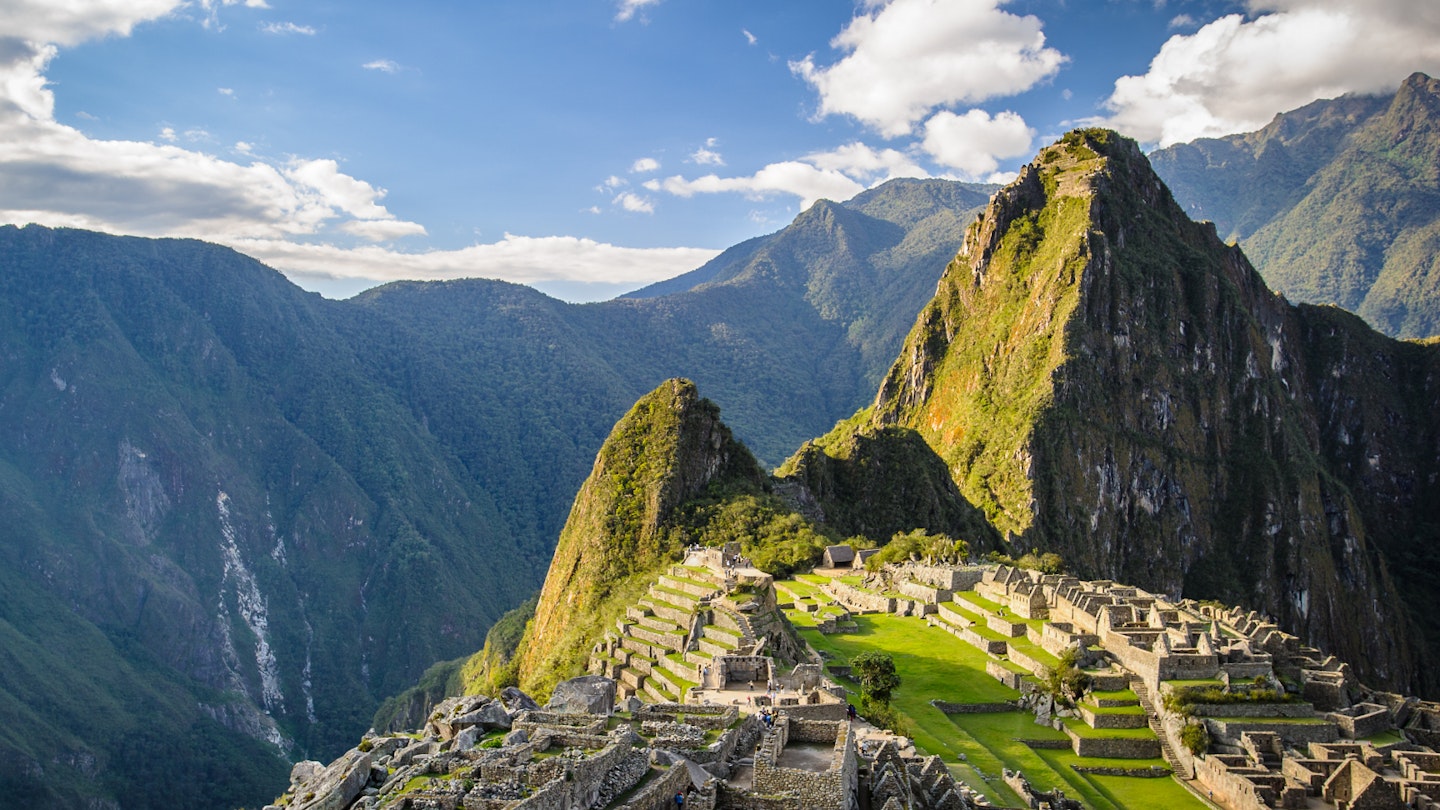Responsible Travel Tips for Machu Picchu
It’s one of the world’s most spectacular archaeological sites, yet Machu Picchu has become a victim of its own popularity. The 2017 introduction of a timed ticketing system is just one of several recent initiatives the Peruvian government has implemented to protect this ancient wonder. However, there are plenty of ways visitors can help preserve the iconic ruins for the future.
Consider an Inca Trail Alternative
Like Machu Picchu itself, Peru’s famous Inca Trail has suffered from an increase in tourist numbers over the years. Permits for the classic four-day trek are limited to just 500 per day (including guides and porters) to minimize damage to both the trail and the fragile ecosystems surrounding it. If you’re flexible, consider exploring more sustainable and far less crowded Inca Trail alternatives, many of which include authentic Inca trail sections. Notable options include:
- Salkantay Route: A five to eight-day high-altitude hike through the stunning mountains that surround Machu Picchu.
- Lares Route: A less demanding yet culturally immersive multi-day journey through the Lares Valley highlands, tucked behind the Sacred Valley.

Choose Guides, Tours, and Accommodations Wisely
All visitors to Machu Picchu are now required to enter the site with a professionally qualified and authorized guide. Regrettably, not all hiking operators meet this standard. Take time to research operators carefully, ensuring they practice responsible tourism, which includes environmental protection, cultural engagement, and fair compensation for their staff—especially porters. While porters’ rights are now protected in Peru, some operators manipulate the rules by overloading porters or underpaying them; responsible operators typically pay at least twice the standard daily wage, which is about 45 soles.

When it comes to choosing accommodation, opt for hotels and guesthouses that prioritize both environmental sustainability and the local community. Checking reviews and asking questions can help ensure you choose responsibly. Staying at homestays also directly supports local economies.
Stay Off the Ruins
Unlike historical sites such as Rome’s Coliseum or China’s Great Wall, Machu Picchu was not designed to handle the foot traffic of thousands each day. Many archaeologists estimate that the site housed just 1,000 people at its peak. Despite daily visitor caps now set at 2,500, many tourists still touch the ruins and trespass into roped-off areas, posing not only a risk to preservation but also to their own safety. For instance, in 2016, a tourist tragically fell to his death while posing for a photograph in an out-of-bounds area.

Support Local Artisans
Renowned for textiles, silverwork, and other handicrafts, the Sacred Valley offers abundant shopping opportunities. However, quality varies significantly in tourist markets. It is essential to seek non-profits and social enterprises that support the production of authentic, high-quality products while ensuring artisans are compensated fairly. For the highest-quality textiles in Cuzco, don’t miss the following recommended places:
- Center for Traditional Textiles of Peru
- Inkakunaq Ruwaynin weaving cooperative
- Casa Ecologica
Whenever possible, buy directly from artisans, and avoid products that seem to be antiquities or made from unsustainable natural resources like hardwoods.
Don’t Take Souvenirs from Archaeological Sites
Peru has fought to keep its antiquities within its borders since the Spanish conquest nearly 500 years ago. In 2011, Yale University returned thousands of artifacts excavated at Machu Picchu by explorer Hiram Bingham between 1912 and 1915, yet thousands more remain at risk of illegal removal. If you encounter a potential antiquity at Machu Picchu or any other archaeological site, report it to the authorities. Pocketing a tiny pottery fragment may seem insignificant, but collective actions of four million annual visitors can lead to significant losses.

Avoid Plastic and Pack Out Your Trash
While toilet paper only takes a few months to break down (longer in dry climates like the Andes), no one wants to see it flapping around Peru’s archaeological sites, much less plastic food wrappers or bottles, which can take hundreds of years to degrade. Adhering to the ‘leave no trace’ principles of responsible hiking is crucial in preserving Peru’s natural beauty. Be prepared with a waste disposal kit, and limit your plastic use wherever possible. When nature calls (and you need to dig a hole), ensure it’s 200 feet away from any water source and that the hole is at least six inches deep.

Respect Local Culture and Customs
Being mindful of local culture is key to responsible travel. Learning a few words of the local language can enhance your experience. Since Quechua is the first language of many rural Andean people, including most Inca Trail porters, mastering simple phrases like wuynus diyas (good morning) and solpayki (thank you) will greatly enrich your interactions.
Additionally, dress modestly; while neat casual attire is generally acceptable, avoid exposing too much skin, particularly at religious sites.
Don’t Inadvertently Support Child Labour
Regardless of your route to Machu Picchu, you’re likely to encounter young children selling cigarettes or postcards and sometimes asking directly for money. Numerous studies indicate that giving money to child workers perpetuates poverty and keeps them out of school. A respectful No, gracias can be more beneficial to their future. For those wanting to help further, seek out organizations committed to combating child poverty and labor, such as Save The Children and Childsafe.

Be a Respectful Photographer
Machu Picchu and the Sacred Valley provide superb photo opportunities, but this does not grant license to photograph everything without thought. It is respectful to ask permission before photographing local people, and if payment is requested in return, a small fee (one or two soles) is a fair compensation. When photographing children, always seek parental permission and conduct transactions through the parent or guardian.
Drones are prohibited at Machu Picchu, so check local regulations before you consider flying one elsewhere, and always be conscious of how it may affect others enjoying the majestic Peruvian Andes.
Sarah Reid traveled to Machu Picchu with support from Mountain Lodges of Peru (mountainlodgesofperu.com) and Cox and Kings (coxandkings.co.uk). GoTravelDaily does not accept freebies for positive coverage.





